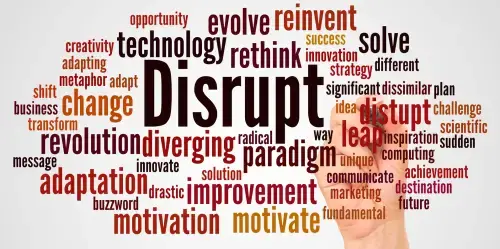Innovative Ways to Increase Revenue in Training Business with a Learning Management System (LMS)
The digital transformation has revolutionized the training industry. Today, organizations face the challenge of adapting their training offerings not only to new technologies but also to changing customer expectations. Modern Learning Management Systems (LMS) offer numerous opportunities to not only optimize the training experience but also to increase revenue.
Here’s how you can leverage these opportunities to expand your business and boost your revenue.
1. Exploring New, Innovative Business Areas

Exploring new business areas is crucial for long-term success in the competitive education market. By utilizing a modern LMS, you can expand your current offerings and align with emerging trends such as personalized learning and micro-learning.
This not only creates new revenue streams but also differentiates you from the competition and enhances your appeal to diverse audiences.
1.1 Personalized Learning with Artificial Intelligence
In an era where personalized experiences are becoming the norm, personalized learning content is increasingly important. An advanced LMS that integrates Artificial Intelligence (AI) can deliver exactly that: it analyzes learners' behavior and progress to create customized learning paths. This ensures that each learner receives content tailored to their specific needs and pace.
For instance, a company offering training for software developers might use an AI-powered LMS to automatically suggest advanced courses for learners who have successfully completed basic modules. This automation saves time and ensures learners are always at the right level.
Economic Impact Calculation: Personalized learning experiences have been shown to significantly enhance customer retention. Studies indicate that personalized experiences in education can increase retention rates by up to 25%.
Investment in AI can result in notable increases in engagement, subsequently boosting revenue per customer.
1.2 Micro-Learning and Just-in-Time Training
Learning behaviors are changing. Lengthy, intensive training sessions are being replaced by shorter, more focused learning units. Micro-learning delivers content in bite-sized modules that fit easily into the busy schedules of learners. Just-in-Time Training ensures that learning content is available exactly when needed, such as before a new challenge at work.
A successful example is IBM, which has implemented micro-learning modules to train its employees on new technologies without causing long interruptions to their daily tasks
Economic Impact Estimation: Micro-learning is a cost-effective method for creating and distributing content. According to Deloitte, companies adopting micro-learning see efficiency improvements of up to 15%, as shorter modules are quicker and cheaper to produce.
1.3 On-Demand Certifications and Badges
The demand for official proof of acquired skills is growing. An LMS allows you to offer on-demand certifications and digital badges as visible proof of learners' achievements. These certifications not only serve as incentives for learners but also provide a revenue opportunity for businesses.
Coursera, for example, offers certificates for completed courses that can be purchased for a fee. These certificates are highly valued across many industries.
Economic Impact Estimation: Pearson reports that businesses offering certifications can increase their revenue per customer by up to 30%. The monetization potential of certifications and badges is significant, especially in fields where official proof is highly valued.
2. Offering Innovative Additional Services

Innovative additional services help increase the value of your training offerings and set you apart from competitors. With a modern LMS, you can offer supplementary services such as content-as-a-service or certification programs that enhance customer retention and open up new revenue streams.
These additional services provide an opportunity to deepen your existing customer relationships while also expanding your reach.
2.1 Content-as-a-Service (CaaS)
Content created once can be sold not just to your direct customers but also licensed to other companies. With a modern LMS, you can offer high-quality learning content through a Content-as-a-Service (CaaS) model, where other organizations use your content to enhance their own training programs.
For example, a provider of safety certifications might license its modules to other organizations that need similar training but lack the resources to develop their own content.
Economic Impact: Licensing learning content can increase overall revenue by up to 20%, as noted by Gartner in their report on CaaS models. This approach optimizes the return on investment for content creation, particularly for businesses with a broad content portfolio.
2.2 Blended Learning Services
Blended Learning combines the flexibility of online training with the benefits of in-person instruction. This hybrid approach offers learners the best of both worlds: digital content available anytime and practical workshops. An LMS can streamline the entire process, from course enrollment to managing online materials and organizing in-person sessions.
Siemens, for example, successfully integrates blended learning into its strategy by combining digital training with face-to-face workshops for complex subjects like machine control.
Economic Impact Calculation: Blended learning reduces operational costs and increases participant numbers. According to a Brandon Hall Group report, blended learning can improve profit margins by up to 10% due to more efficient use of resources.
2.3 Subscription Models and Memberships
Subscription models offer continuous access to learning content and create predictable, recurring revenue streams. By providing exclusive content or ongoing courses through memberships, you can build long-term customer loyalty.
LinkedIn Learning, for instance, uses a subscription model to offer unlimited access to a wide range of courses, which has proven successful in retaining customers.
Economic Impact Calculation: Harvard Business Review reports that subscription models can increase the Customer Lifetime Value (CLV) by up to 35%. Recurring revenue offers financial stability and facilitates long-term planning.
3. Targeting New Customer Segments

Reaching new target groups is an effective way to expand your market presence and secure sustainable growth. An LMS enables you to develop tailored training offerings for specific groups such as freelancers, public institutions, or companies undergoing digital transformation.
With a targeted approach, you not only attract new customers but also diversify your business, making it more resilient to market fluctuations.
3.1 Companies in Digital Transformation
Digitalization is impacting every business sector. Medium-sized companies, in particular, face pressure to train their workforce in new technologies and digital practices. An LMS offers scalable and flexible training programs tailored to the needs of these organizations.
SAP, for example, provides specialized training programs for companies needing to train their employees on ERP systems. These trainings are fully digitalized and scalable.
Economic Impact Calculation: PwC's report on digital transformation indicates that entering this market can expand your reach by up to 50% and drive revenue growth of 25%.
3.2 Freelancers and Self-Employed Professionals
Freelancers and self-employed individuals need to continuously upgrade their skills to remain competitive. An LMS tailored to their needs can attract this audience by offering flexible learning paths and affordable prices.
Udemy is a successful example, offering a variety of courses in areas like marketing, design, and programming tailored to freelancers.
Economic Impact : A Statista survey shows that targeting freelancers can scale your revenue and increase margins by up to 15%.
3.3 Training for Government Agencies and NGOs
Government agencies and NGOs have specific training needs for their employees. An LMS that caters to these needs can secure long-term framework agreements and provide a stable income stream.
For example, the OECD offers training programs for governments and NGOs on specialized platforms covering a range of relevant topics.
Economic Impact Calculation: According to an OECD report on public sector training, securing contracts with government organizations can enable revenue growth of up to 20%.
4. Expanding Training Business with Existing Customers

Expanding your training business with existing customers is an efficient way to increase revenue without incurring high acquisition costs. An LMS helps you identify cross-selling and up-selling opportunities and create tailored offers for your current customers.
By leveraging gamification, CRM integration, and data analytics, you can enhance customer retention and generate additional revenue.
4.1 Cross-Selling and Up-Selling through CRM Integration
Integrating an LMS with CRM tools like Salesforce allows for targeted cross-selling and up-selling. By analyzing data in the CRM, you can create personalized offers and highlight additional relevant courses to existing customers. Automated marketing campaigns boost revenue and enhance customer retention.
For example, a training provider offering Microsoft Office courses could use CRM data to identify customers interested in advanced Excel training and target them with tailored offers.
Economic Impact: Forrester estimates that integrating CRM and LMS can increase revenue per customer by up to 15%.
4.2 Retention Strategies through Gamification and Social Learning
Gamification, which incorporates game-like elements into learning processes, and social learning, where learners interact and learn from each other, increase engagement. Elements like points, badges, and leaderboards motivate learners to stay engaged and prolong their commitment to your platform.
Duolingo, for instance, uses gamification and social elements to keep users motivated. The app rewards continuous learning with points and level-ups, encouraging regular use.
Economic Impact Estimation: Gartner’s study indicates that gamification can increase customer retention by up to 20%, leading to a potential revenue growth of up to 10%.
4.3 Advanced Analytics and Reporting Tools
An LMS provides detailed insights into customer behavior and needs. Advanced analytics and reporting tools enable you to track learner progress and identify trends, allowing you to proactively develop new learning offers. These data-driven insights create additional cross- and up-selling opportunities.
For instance, a cybersecurity training provider might use data analysis to find that many customers are also interested in compliance training and offer corresponding courses.
Economic Impact Calculation: Deloitte reports that leveraging data analytics can increase Customer Lifetime Value (CLV) by up to 25%.
Conclusion: Sustainable Revenue Growth with a Modern LMS
A modern LMS is more than just a platform for delivering learning content. It offers numerous opportunities to explore new business areas, provide innovative additional services, and enhance revenue through targeted strategies.
Leverage these potentials to position your training business for sustainable success.
Sources:
- McKinsey Study on Artificial Intelligence in Education (2018)
- Deloitte Research on Micro-Learning (2019)
- Pearson Study on Certification Monetization (2020)
- Gartner Report on Content-as-a-Service Models (2020)
- Brandon Hall Group Report on Blended Learning (2019)
- Harvard Business Review on Subscription Economy (2018)
- PwC Report on Digital Transformation in SMEs (2020)
- Statista Survey on Freelancer Training Needs (2021)
- OECD Report on Training in Public Institutions (2020)
- Forrester Report on CRM and LMS Integration (2020)
- Gartner Study on Gamification in E-Learning (2021)
- Deloitte Report on Data Analytics in Education (2019)

About Us
Since 1998 SoftDeCC is working closely with major training centers and academies. This results in a unique experience with training requirements.
Our Learning Management System is designed to adjust to individual corporate learning processes and address evolving challenges. More...

Free Consultancy
Discuss your Training Challenge with us.
Call +49 (0)89 / 309083930 to arrange for your free consultancy.
.webp)




